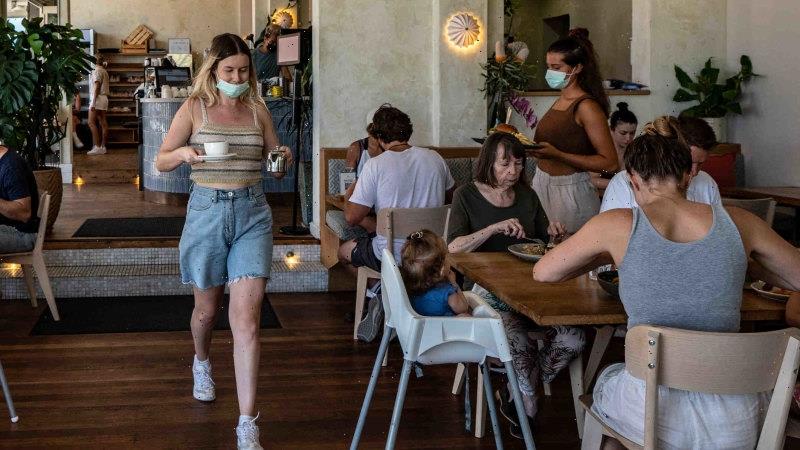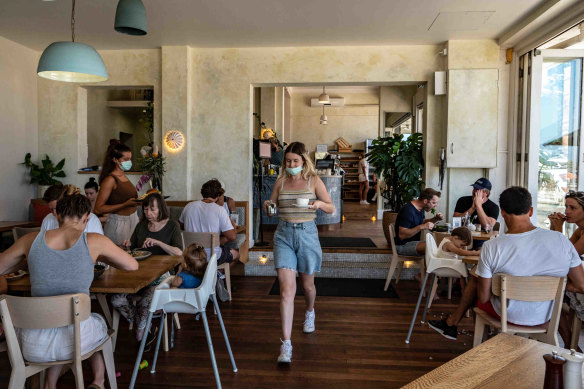The gender pay gap is stagnating even as more women join the workforce, with men now taking home an average of $263.90 more than women each week.
Data from the Australian Bureau of Statistics released on Thursday shows that in the six months to May, average full-time weekly earnings for men were $1872.90 and for women $1609. The gap grew slightly over the past six months to 14.1 per cent, up from 13.8 per cent, although it had narrowed 0.1 percentage points compared to the previous year.
The gender pay gap is stagnating despite more women getting jobs because they tend to work in low-paid industries such as hospitality.Credit:Flavio Brancaleone
Workplace Gender Equality Agency director Mary Wooldridge said while the figures had fluctuated, the overall trend was not decreasing.
“It’s basically stagnating,” she said.
“The trend is important because that shows us how men and women are valued in the workplace – and we’re not making the progress that we need to make.”
Since November 2018, the gender pay gap has stayed between 13.4 and 14.2 per cent, moving from one end of that band to the other every six months but not showing the steady declines of previous years.
In the latest figures, the gap is highest in Western Australia, at 22.4 per cent, because of the dominance of the mining industry. Queensland, which also has a strong mining sector, had the second-largest pay gap.
Victoria was third-worst at 14.2 per cent, followed by NSW at 12.4 per cent.
South Australia (7.4 per cent) and Tasmania (7.5 per cent) had the lowest gender wage gaps and are also the two lowest-paid states.
Of the 18 industry sectors, the largest gap both in dollar terms and proportionally is in professional, scientific and technical services, where men earn $585.60, or 25.3 per cent more than women. The highest-paid sector, mining, has the fourth-highest gender pay gap in dollar terms with women earning an average of $443.80 a week less than men (16 per cent).
While more women are now in jobs, most of the new employees are working in the lowest-paid sectors of hospitality and retail.
Wooldridge said while the influx of women into lower-paid industries was leading to the increase in the gender pay gap, the answer wasn’t to tell women not to take jobs in those fields.
“That’s the return of tourism and hospitality sectors, and that’s really important for the economy as a whole. But we do also need to see that growth in other areas of the economy as well,” she said.
But with there still being fewer women in management and other senior positions, it was vital that employers look at how to create more opportunities for women to step up into those roles.
“We do need to look at wage increases and obviously, that’s part of the important debate that we’re having now in terms of some of those low-paid and feminised industries,” Wooldridge said.
“But we also need to look at how we can create business environments for women to take more senior leadership opportunities, taking full advantage of their skills and capabilities, but doing it in a flexible way.”
The government is working on a gender equality strategy as well as assessing new budget measures for their gender impact.
Finance Minister Katy Gallagher said the widening of the pay gap over the past six months was a step in the wrong direction.
“We must take targeted action to fix it. This will be a key focus of jobs and skills summit,” she said.
Cut through the noise of federal politics with news, views and expert analysis from Jacqueline Maley. Subscribers can sign up to our weekly Inside Politics newsletter here.
Most Viewed in Politics
From our partners
Source: Read Full Article

